
Epilecta linogrisea is a moth of the family Noctuidae. It is found in Central and Southern Europe, Algeria, Morocco, the Caucasus, Armenia, Turkey, North-Western Iran, Syria, Israel and Lebanon.

Chersotis margaritacea is a moth of the family Noctuidae. It is found in Central and Southern Europe up to heights of 1,500 meters. Outside of Europe, it is found in Algeria, Morocco, Anatolia, Iran, Georgia, Armenia, Kazakhstan up to the Altai mountains.

Chersotis cuprea is a moth of the family Noctuidae.

Chersotis multangula is a moth of the family Noctuidae. It is found in the mountainous areas of Central and Southern Europe, Morocco, Turkey, Armenia, Iran, Syria, Lebanon and the Caucasus.
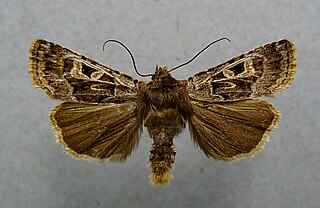
Chersotis ocellina is a moth of the family Noctuidae. It is found in the mountainous areas of Europe, especially in the Alps, the Apennine Mountains, Pyrenees and the Cantabrian mountains.

Cosmia diffinis, the white-spotted pinion, is a moth of the family Noctuidae The species was first described by Carl Linnaeus in 1767. It is found in central and southern Europe, to the north it is found up to central England and the southern parts of the Netherlands. There is a disjunct population in Gotland. To the south, it is found down to Spain, Italy, Russia, northern Greece and Bulgaria. In the east, it is found as far as Lithuania and the Black Sea.

Hadena magnolii is a species of moth of the family Noctuidae. It is found in Morocco, Algeria, south-eastern Europe, Turkey, Israel and Lebanon, Iran, Turkmenistan, Uzbekistan and Kirghizia.

Hadena silenes is a species of moth of the family Noctuidae. It is found in Europe, Turkey, Israel, Iran and Turkmenistan.
Hadena sancta is a species of moth of the family Noctuidae. It is found in Spain, Corsica, Sardinia, Malta, North Africa, Israel, Lebanon, Syria, Jordan, Cyprus, Turkey, Saudi Arabia and Yemen.

Euxoa distinguenda is a moth of the family Noctuidae. It is found in central, southern and eastern Europe, Turkey, Lebanon, Israel, Jordan and western Asia.
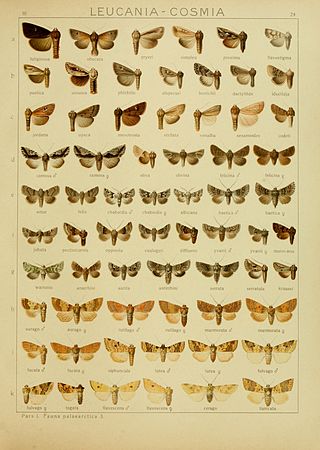
Cleonymia baetica is a moth of the family Noctuidae. It is found from south-western Europe and North Africa, south-east Turkey, Iraq to southwest Iran, it is also known from Saudi Arabia, Jordan, Syria and Israel.

Euxoa conspicua is a moth of the family Noctuidae. It is found in Portugal, Spain, Andorra, France, Italy, Corsica, Crete, Cyprus, Romania, Bulgaria, Greece, Ukraine and southern and eastern Russia, east to China and northern India. It is also present in the Levant.

Euxoa hastifera is a moth of the family Noctuidae. It is found from southern Europe to Siberia and Tajikistan.

Dichagyris celsicola is a moth of the family Noctuidae. It is found in Greece, France, Italy and Turkey. It might also be present in Iran and Iraq.

Dichagyris forcipula is a moth of the family Noctuidae. It is found from central and southern Europe and Algeria, east to the Caucasus, Turkey, Syria, Lebanon, Iraq and Iran.

Dichagyris signifera is a moth of the family Noctuidae. It is found from Spain and France, east through central and southern Europe to Latvia and Russia.
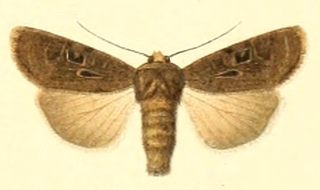
Chersotis andereggii is a moth of the family Noctuidae.

Chersotis larixia is a moth of the family Noctuidae. It is found in Spain, France, Switzerland, Italy and Sicily, Crete, Turkey, and east to Armenia, Azerbaijan, Syria, Iran, Lebanon, and Turkmenistan. In Europe, it is found in mountainous regions, like the Pyrenees, the Alps, and the Maritime Alps, up to heights of 2,000 meters.
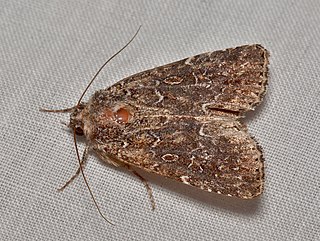
Condica capensis is a moth of the family Noctuidae. It is found across Africa, the Indian sub-continent and South-East Asia. In Europe, it is only common in southern Spain, but can be found further north.
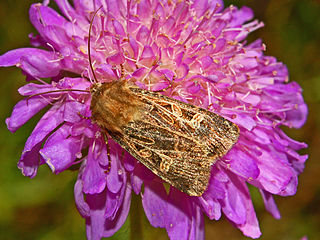
Chersotis alpestris is a moth of the family Noctuidae.

















